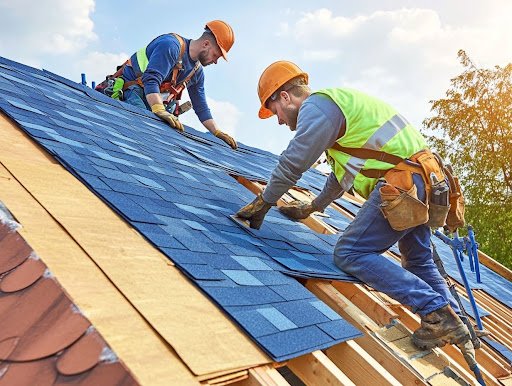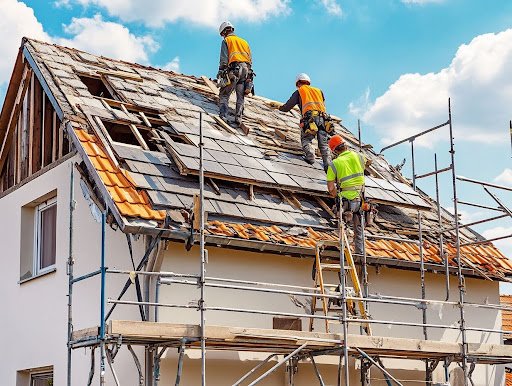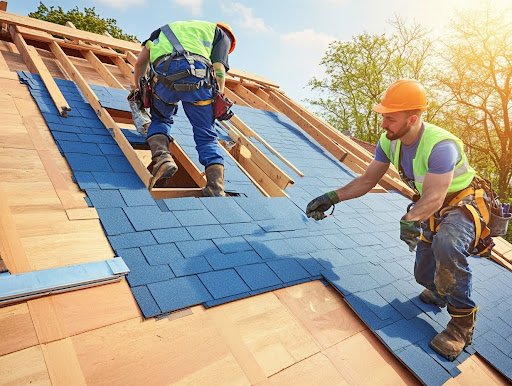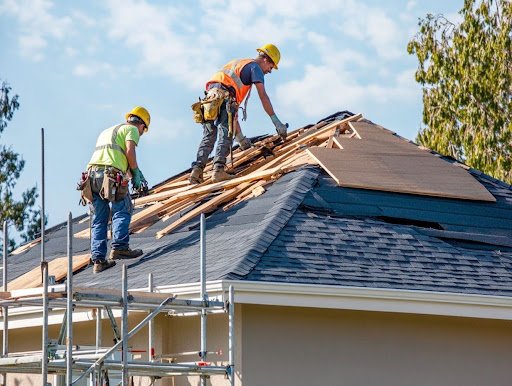Roof Replacement Process
- Trusted Roofing Professionals Perth
- Free Quotes Available
- Contact Us Now
Replacing a roof is a substantial decision that can significantly influence a home’s safety, aesthetics, and value. In Perth, where weather conditions can be unpredictable, it is essential to comprehend when a roof replacement is necessary and how to select an appropriate roofing company. This guide will outline the indicators that signal the need for a roof replacement, detail the steps involved in the process, and provide essential maintenance tips for your new roof. Continuing to read will ensure that your home remains adequately protected for years.
Key Takeaways:
- A properly installed roof is crucial for the safety and protection of your home. It’s essential to know the signs that indicate the need for a roof replacement.
- When choosing a roofing company, look for experience, reputation, and proper licensing and insurance. Don’t be afraid to ask questions before making a decision.
- The roof replacement process involves inspection, obtaining permits and materials, removing old materials, installing new materials, and a final clean-up and inspection. Properly maintaining your new roof is essential to ensure its longevity.
Why is Roof Replacement Necessary for Structural Integrity?
Roof replacement is a critical undertaking that homeowners in Perth, Australia, should prioritise to maintain their properties’ safety, functionality, and aesthetic appeal.
Given the region’s variable weather patterns, roofs frequently experience considerable wear and tear from weather-related damage, resulting in structural issues that jeopardise a home’s integrity.
Furthermore, a well-maintained roof can substantially improve energy efficiency, lower energy costs, and enhance the property’s overall value. This makes roof replacement an essential component of property investment and ensures compliance with local building regulations and Australian Standards.

Signs You Need a Roof Replacement and Roof Inspection
Identifying the signs that indicate a need for roof replacement and understanding a roof’s lifespan is essential for ensuring the safety and comfort of homes in Perth.
Awareness of these indicators enables homeowners to make informed decisions regarding their roofing needs. The most significant signs to consider include:
- Visible Wear and Tear: Cracked or missing tiles can compromise a roof’s integrity, making it susceptible to the elements and allowing moisture to infiltrate.
- Leaks: Any water intrusion can lead to mould proliferation and structural damage, often requiring immediate attention.
- Water Stains: Discolouration on ceilings or walls signifies moisture accumulation, suggesting the potential for roof failure.
- Age of Roofing Materials: Most roofing materials have a lifespan of 20-30 years, and as they age, they may deteriorate, losing their effectiveness in providing protection.
Each factor plays a critical role in a roof’s overall lifespan and underscores the importance of regular inspections. Proactive evaluations can identify underlying issues before they escalate, ensuring homeowners preserve a secure and comfortable living environment.
Choosing the Right Roofing Company
Choosing the appropriate roofing company is crucial in achieving a successful roof replacement project, especially in Perth, where adherence to local building regulations and roofing standards is essential for ensuring quality and safety.
Qualified professional contractors will deliver high-quality products and services and maintain transparent communication throughout the roofing project. This approach ensures that homeowners’ expectations are met and suitable roofing warranties are established.
What to Look for in a Roofing Company
When evaluating potential roofing companies, homeowners should seek professional contractors who comprehensively understand roofing materials and compliance standards pertinent to Perth.
Furthermore, it is essential to consider their experience within the industry, as seasoned professionals are generally more adept at navigating challenges and providing superior guidance. Homeowners should also verify the certifications and licences of contractors, ensuring adherence to the highest standards of quality and safety.
Another critical factor is a commitment to using high-quality products, as this directly influences the longevity and performance of the roofing system. During the initial consultation, a thorough property assessment should be carried out, allowing roofing professionals to customise solutions that align with the homeowner’s requirements.
Obtaining a detailed quotation is vital; this document outlines the anticipated costs and offers transparency regarding the materials and labour involved, enableing homeowners to make informed decisions.

Questions to Ask Before Hiring a Roofing Company
Before engaging a roofing contractor, asking specific questions that will illuminate their qualifications and reliability regarding your roof replacement project is essential.
This careful evaluation ensures that the investment made in the roofing process is sensible and secure. Homeowners should inquire about the contractor’s experience with local roofing standards, specific warranties, and recommended maintenance practices.
Establishing a clear line of communication throughout the entire project is critical. The following is a list of essential questions to consider:
- How many years of experience do you have in roofing?
- Can you provide references from recent clients?
- What types of roofing materials do you recommend for my home?
- What is your process for addressing unforeseen issues?
- What warranty options accompany your work?
Understanding the proposed timeline and project management techniques can offer reassurance. Clarity on these aspects will help homeowners ensure that their choice meets their expectations and adheres to necessary roofing standards and safety protocols.
The Roof Replacement Process
The roof replacement process is a comprehensive procedure that necessitates meticulous planning, adherence to installation techniques, and execution to guarantee the structural integrity and longevity of the new roofing system.
This process generally commences with an initial consultation and a thorough assessment of the existing roof, including an evaluation of insulation properties. It is then followed by the careful removal of the old roofing materials to prepare for installing new roofing options.
Throughout this procedure, professional contractors will prioritise site protection and conduct quality checks to ensure compliance with roofing standards, meet homeowners’ expectations, and adhere to the established project timeline.
Step 1: Inspection and Assessment
The initial step in the roof replacement process involves a comprehensive inspection and assessment of the roof to determine its overall structural integrity and identify any existing issues that may impact energy efficiency.
A thorough roof inspection is essential as it uncovers visible damage and hidden vulnerabilities that could result in significant problems in the future. During this evaluation, various components such as tiles, flashing, gutters, and ventilation systems must be meticulously examined. Inspectors should also assess for signs of moisture intrusion, mould growth, and weather-related wear and tear effects.
Conducting this inspection is instrumental in making informed decisions regarding the appropriate roofing materials and suitable installation techniques to enhance durability and performance. For instance, if weather damage is evident, it may necessitate selecting more resilient materials. Furthermore, discovering structural issues may lead to repair recommendations before any new installation. Being proactive in these areas can prevent homeowners from incurring costly repairs and ensure long-term energy efficiency.

Step 2: Obtaining Permits and Materials
Following the inspection and assessment, the subsequent step involves obtaining the necessary permits from the local council and selecting appropriate roofing materials that adhere to compliance standards and local building codes.
It is imperative to recognise that the permit process in Perth is not simply a procedural formality but a critical component ensuring construction aligns with local regulations. This ultimately protects the structure’s integrity and its occupants’ safety. Failure to secure the requisite permits can result in substantial delays, financial penalties, or even the necessity to remove non-compliant work.
The selection process for roofing materials can significantly influence various facets of the project, including preparation steps and adherence to the Building Code of Australia. For example, lightweight materials facilitate a quicker installation timeline, while energy-efficient options can enhance the roof’s performance by lowering heating and cooling costs over time.
- Choosing the right materials ensures compliance with the Building Code of Australia and enhances the roof’s durability.
- Opting for sustainable materials with high energy efficiency ratings can save long-term energy.
- A well-planned selection process contributes significantly to the success of the roofing project.
Collaborating closely with local authorities and experienced roofing professionals, such as Australian roofing contractors, can streamline the permit acquisition and material selection processes, ensuring a seamless transition from planning to execution.
Step 3: Removal of Old Roofing Materials
The meticulous removal of old roofing materials is critical to the roof replacement process. This ensures that any underlying structural issues, such as those requiring structural repairs, are addressed before installing new materials. This procedure not only safeguards the integrity of the latest roofing system but also minimises the risk of unforeseen complications during installation.
By carefully assessing the condition beneath the existing layer, contractors can identify potential hazards such as water damage, rot, or weakened supports that could compromise the safety and durability of the roof.
Before commencing the removal process, it is essential to secure the worksite by implementing appropriate safety measures, including scaffolding, safety harnesses, and protective gear. Additionally, covering the surrounding area is vital to protect property from debris and prevent unexpected falls of materials.
Once the old materials are removed, a comprehensive inspection can be conducted to uncover any hidden damage that must be addressed before applying new roofing.
Step 4: Installation of New Roofing Materials
Once the old roofing materials have been removed, installing new ones commences. This process adopts a systematic approach that may incorporate layered installation techniques to enhance durability and energy efficiency.
During this critical phase, the installer will typically choose from various materials, including Colorbond steel and concrete tiles, each requiring specific methods for optimal application. For example, when employing Colorbond steel, the installer often utilises a system of overlapping sheets, ensuring that the seams are properly sealed to eliminate any potential for leaks. In contrast, installing concrete tiles involves positioning each tile in a staggered pattern to create a robust interlocking system that improves wind resistance.
Adhering to the roof installation guide requires conducting quality checks at every stage for both materials. These checks encompass inspecting alignment, verifying that fasteners are securely tightened, and ensuring all materials comply with the relevant roofing standards.
Adhering to these installation techniques can ensure the roofing system’s longevity and significantly enhance the building’s energy efficiency.

Step 5: Clean Up and Final Inspection
Following the installation, a comprehensive clean-up is carried out, culminating in a final inspection to ensure the roofing project adheres to all quality standards and meets homeowners’ expectations.
This clean-up process encompasses more than merely removing debris; it involves properly disposing of all materials and ensuring that the surrounding areas are free from hazards. Once the area has been cleared, a thorough quality check is essential for identifying imperfections or potential issues.
Maintaining open lines of communication with the homeowner throughout this process is of utmost importance. Regular updates and discussions regarding any findings during the final inspection contribute to building trust and transparency. Roofing warranties are also critical, as they reassure homeowners about the durability and integrity of their new roof.
Additionally, post-installation guidance on maintenance should be provided to ensure that the roofing system operates at its best. Homeowners should be informed about potential issues to monitor and recommended maintenance practices to extend the roof’s lifespan.
The duration of a roof replacement project can vary significantly based on several factors, including the type of roofing materials used, the complexity of the installation process, and the expertise of the roofing contractors involved.
While most roofing replacements generally take one to three weeks, various critical elements can influence this timeline. Weather conditions like rain or extreme temperatures often cause delays, as safety and quality must remain paramount.
Additionally, adherence to local building regulations may introduce extra steps that require careful coordination and permits before work can commence. Factors such as the size of the roof, the number of layers being removed, and the necessity for structural repairs can also affect the project’s overall duration.
The following outlines expected timelines for various roofing types:
- Asphalt Shingle: 1-2 weeks
- Metal Roofing: 1-2 weeks
- Tile Roofing: 2-4 weeks
- Flat Roofing: 1-3 weeks
Given the multitude of factors that can influence the scheduling of a roofing project, it is essential to consult with professionals for a more accurate estimate tailored to specific requirements.
How Much Does a Roof Replacement Cost in Perth?
The cost of replacing a roof in Perth, Australia, can vary significantly and is influenced by several factors, including the selection of roofing materials, labour costs, and the homeowner’s overall roofing budget. Understanding these elements is essential for making informed decisions.
Various components contribute to the total expense, starting with material costs and other considerations like the cost to replace existing structures. The choice of roofing material—ranging from asphalt shingles to tiles or metal—can substantially impact pricing. Generally, asphalt shingles are the most economical option, whereas metal roofs may offer greater longevity at a higher initial investment.
Furthermore, labour expenses represent another critical factor, typically comprising 20-30% of the total budget. Additionally, hidden costs may arise, such as the necessity for structural repairs or disposal fees for the existing roofing materials.
It is advisable to obtain multiple estimates and to remain cognisant of potential complications that may increase overall expenditures. Therefore, when planning for a roof replacement, budgeting for these unforeseen costs is crucial to ensure the project remains financially manageable.
Tips for Maintaining Your New Roof
Maintaining a new roof is essential for extending its lifespan and ensuring its effective performance, thereby preserving the investment in the property.
To achieve this objective, it is advisable to implement a series of ongoing maintenance practices. Regular inspections should be conducted, particularly during seasonal transitions, such as the onset of spring and autumn, when weather changes can significantly impact roof health. Addressing minor issues early can prevent costly repairs in the future.
- It is recommended to schedule a professional inspection at least twice a year.
- Monitor the roof’s condition following severe weather events by conducting a seasonal inspection.
- Clear debris from gutters and downpipes to ensure proper drainage.
Understanding roofing warranties is also crucial, as they often include specific maintenance requirements, such as a professional service schedule, that must be adhered to to remain valid. By following a professional service schedule, property owners can ensure their roofing system remains covered and save money in the long run.
Conclusion: The Importance of a Properly Installed Roof
A properly installed roof is essential for maintaining the structural integrity of a home, enhancing energy efficiency, and protecting the property investment over time.
This critical feature protects against harsh weather conditions and contributes to the overall aesthetic appeal, which can either enhance or diminish the property’s market value. When evaluating various options, it is essential to consider the long-term benefits associated with different roofing materials, as these can significantly impact future maintenance expenses and energy consumption.
Engaging the expertise of experienced professionals ensures that the installation meets local regulations, which is vital for safety and longevity.
- Selecting durable roofing materials extends the lifespan of the roof.
- Professional contractors offer experience that minimises risks during installation.
- Adhering to local standards safeguards the investment.
Ultimately, these considerations are not merely practical; they reflect a commitment to quality and homeowner expectations that underscore the priorities of a responsible homeowner.
Frequently Asked Questions
What is the roof replacement process?
The roof replacement process is a comprehensive breakdown of steps that involves removing the old roof and installing a new one. This addresses roof-related issues like leaks, damage, and age-related wear and tear.
How long does the roof replacement process take?
The duration of the roof replacement process can vary depending on factors such as the size of the roof, the type of material being used, and any unforeseen complications. On average, it can take a few days to a few weeks, especially in areas like Perth, Australia.
Do I need to be at home during the roof replacement process?
You do not need to be at home during the roof replacement process. However, you may need to be present during the initial roof assessment and the final inspection to ensure the work has been completed to your satisfaction.
What are the steps involved in the roof replacement process?
The roof replacement process typically involves the following steps: 1) Inspection and assessment of the current roof, 2) Removal of the old roof, 3) Repair or replacement of any damaged areas, 4) Installation of the new roof with materials like Colorbond steel or terracotta tiles, and 5) Final inspection and clean-up, adhering to the Building Code of Australia and Australian Standards.
Do I need to prepare my home before the roof replacement process?
You should remove any valuable or fragile items from the areas surrounding the roof. You can also cover furniture and other items inside the house to protect them from dust and debris. Discuss maintenance guidance and safety precautions with your roofing contractor for specific preparation instructions.
Can I choose the material for my new roof during the replacement process?
Yes, you can choose the material for your new roof during the replacement process. Your roofing contractor can provide options such as Colorbond steel or terracotta tiles, and help you decide based on your budget, climate, and personal preferences, considering factors like home value.
